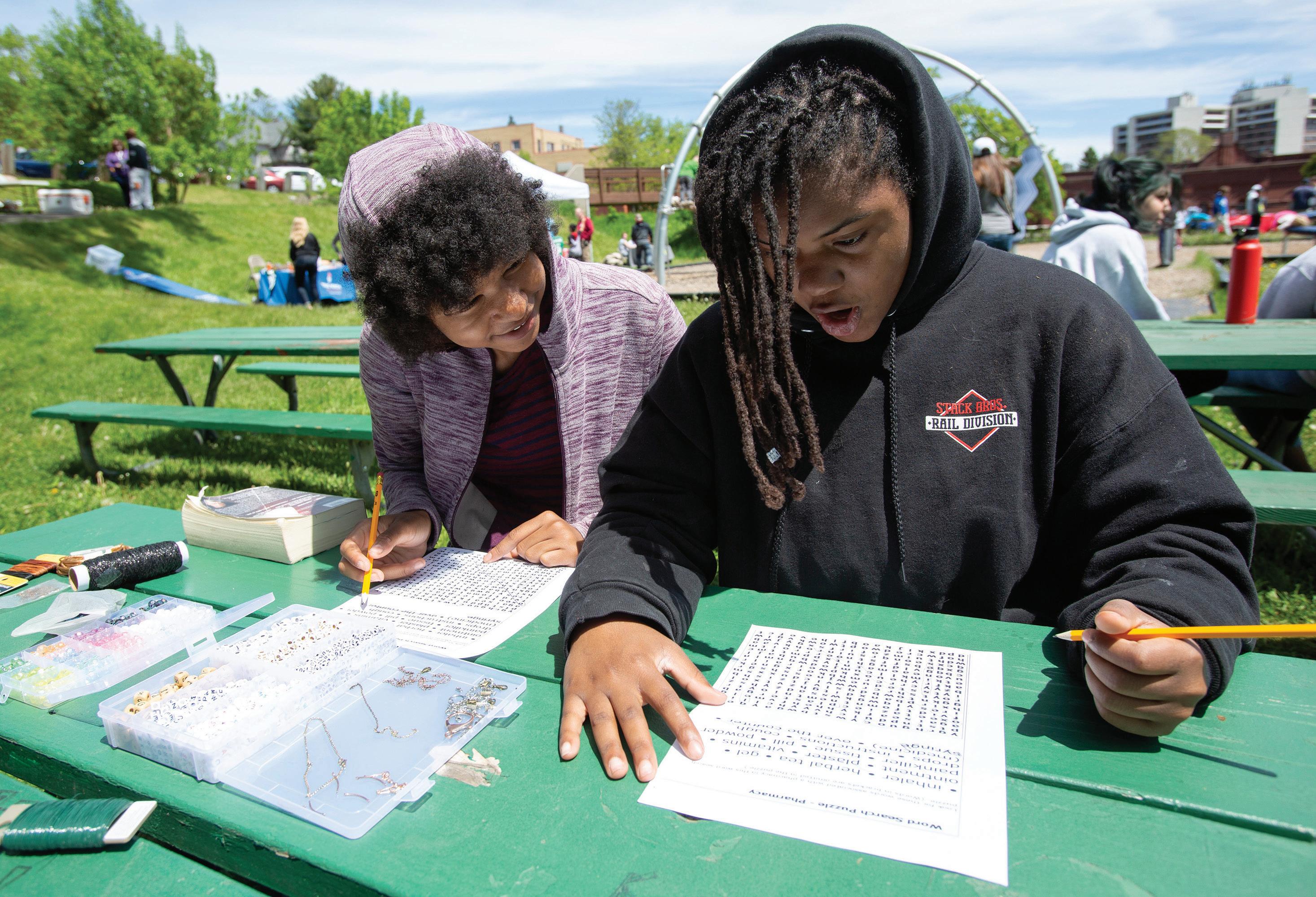
1 minute read
Central Hillside
By Brady Slater bslater@duluthnews.com
The Central Hillside neighborhood in Duluth is one of the city’s oldest, most diverse, poorest and most vibrant neighborhoods.
It is home to myriad social service agencies, shelters and low-income housing options. Because of the steep landscape, it offers some of the city’s best views of Lake Superior. It also features majestic older homes and even some of the city’s most modern examples of residential architecture.
It is home to some of the city’s richest historical markers (Old Central High School) and many of its most active political and cultural voices.
“It’s a super important neighborhood because it shows how diverse Duluth could be,” Lydia Komatsu said. “A lot of people think of Duluth like there’s the lake, the breweries, the trail access, up-and-coming restaurants, cideries and distilleries and that it’s a destination spot. But there are real people living here, trying to survive, make a name for themselves and take care of their families — and a lot of them are here, in this neighborhood.”
Komatsu was speaking from inside the Washington Community Center at the corner of West Fourth Street and Lake Avenue. She’s program coordinator of Neighborhood Youth Services, a yearround drop-in center for school-age children. As many as 70 children access the center on any given weekday throughout the year.
They use the gymnasium, computer lab, go on field trips to parks and destinations throughout the city and have access to a cafeteria with regular meals and snacks.
Community partners offer regular programming, including one from Men as Peacemakers called Champions Building Champions.
Affiliated with The Hills, which operates juvenile justice and residential treatment centers in Duluth, Neighborhood Youth Services has been operating for more than 30 years, Komatsu said. Free to families, it was designed to look after children from the Central Hillside and is open to other areas of Duluth.
“It’s a safe place for kids to come,” Komatsu said. “Neighborhood Youth Services was built to provide a buffer for kids from entering the juvenile justice system. It’s a healthy place for kids to stop in and just be themselves, while also serving as a preventative measure from participating in less safe activities on the streets.”
Open 10 a.m. to 4 p.m. in summers and 2:30-7 p.m. during the school year, Komatsu said it’s hard to quantify the results, but calls it an “extremely rewarding and invigorating space.” As she spoke, a host of children sped into a gymnasium bouncing basketballs and throwing up shots.
“Neighborhood Youth Services is definitely in this neighborhood for a reason,” Komatsu said. “We know there are child care needs that are maybe not accessible to some of the families living in this neighborhood.”










